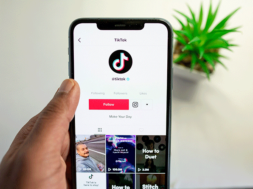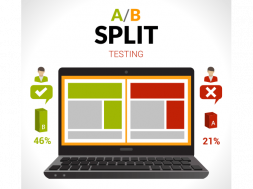
By Aaron Edwards and Jeremy Schoen, Co-Founders, EdwardsSchoen
We get asked all the time, “what’s the next big thing in (education) marketing?” The reality is, inside and outside of education, that things have gotten more convoluted and consumers have more mediums and engagement pathways than ever before. And it’s only going to get more fragmented as time goes on. The next big thing will likely continue to be a series of small things.
Given that, it’s now more important than ever to not necessarily spend more or do more, but to ensure you are sharpening the saw and have a laser focus on the core elements of your current recruitment strategies. Essentially, make sure you get the most out of the proven channels in which you are currently investing.
Typically, when we are evaluating prospective institutions’ marketing efforts, that’s where we start.
Through formal audits of campaigns, we typically uncover opportunities for improvement within core channels; specifically paid search, social and organic efforts (your main website).
Ensuring those channels are getting the detailed analysis and attention they deserve will go a long way in meeting your institution’s enrollment goals.
In this article, we’ll outline some of the specific areas we commonly see as missing the mark – and where you should consider revisiting to enhance the performance of your marketing efforts.
Paid traffic
Paid search has proven to be a high-quality, cost-effective medium within your digital strategy. It is likely where you spend the bulk of your marketing dollars. Your campaigns have been built and optimized for all necessary programs and budgets have been strategically laid out against ad schedules that mirror the highest converting dayparts on your website. Great! But, did you think through ALL the potentially hidden elements that can help take your campaigns to the next level? With the many variations in which paid search campaigns can be structured and optimized, there are seemingly limitless approaches to squeezing every last drop of performance out of your budget. While restricting campaigns can work against achieving your goals, letting Google’s AI take the reins in a hyperlocal setting can prove costly as well. We see a handful of common errors when auditing campaigns for prospective clients – here are a few pitfalls that you should avoid, especially when working with restricted budgets.
Not considering search intent
This can be addressed in several ways and is usually tied to the 1:1:1 cornerstone of paid search; when the target keyword is being utilized (in its exact form) in both the ad copy and landing page content. One of the often-overlooked optimizations is the addition of negative keywords based on actual search queries. Since Google’s introduction of close variant match types, you may be surprised at what budget wasting clicks you may find. There are likely a few irrelevant queries matching your keywords that you didn’t realize were siphoning money through non-aligned search intent. Additionally, if you haven’t run a performance analysis on keyword match types, it may behoove you to do so. There are likely additional opportunities within your campaign to consider funnel position of specific keywords (including brand). Forming a strategy that best supports available budget for these can go a long way in squeezing a few additional leads from your budget.
Favoring quick optimizations over higher-level analysis
While an ongoing review of keyword bids and performance is a paramount component of managing paid search, it is also necessary to take a step back on occasion and look at a few “30,000-foot” data points as well. For instance, do you know the overall efficiency of all of your current keywords? A quick comparison of conversion costs can provide you with a general idea of campaign health. Ideally, you want to make sure that your campaign achieves a goldilocks point, not too narrowly defined and not overly wasteful.
Bid strategy oversight
Bid strategy is one of the more commonly disregarded settings in search campaigns. When creating new campaigns, it’s easy to default to the bid strategy of preference or whatever happens to be working for other campaigns. That would be a mistake. Like any other media tactic, when deciding which bid strategy to use on any particular campaign, you’ll want to first consider your budget and goals.
With restricted budgets and low search impression shares, it’s as important as ever to maximize the efficiency of your daily budget.
When considering bid strategies with elevated AI like maximize conversions or target CPA (cost-per-action), be sure to first educate yourself on the approach and consider any additional steps that may need to be taken down the road.
Organic traffic
Frankly, this is an area that we see being overlooked all too often. Generally speaking, we look at a few core areas when thinking about how to optimize your website and grow your overall website/organic traffic, and thus prospective students from organic efforts. This includes core elements of SEO (title tags, meta descriptions, etc.), ongoing investment into new content and continuous testing of the website to enhance conversion. If you don’t have any dedicated efforts in these specifics areas, you’re likely missing out on organic growth. The more you can do to grow organic efforts, the less reliance you will need on paid activities.
Conversion rate optimization testing
On the other end of the site traffic spectrum, your organic conversion rate leaves something to be desired. If you’re not already testing for CRO, you’re late to the game. Rudimentary testing of photos and Call to Action (CTAs) can be a good place to start, but they are not likely to help you identify the deeper understanding necessary to fully leverage your website’s user experience and conversion funnels. Moving the needle and identifying easily replicable strategies that can be implemented across pages will require less obvious A/B testing (perhaps rearranging or even removing the navigation menu from pages that convert at levels slightly below the top performers or updating the form to a multistep process that visually reduces the number of required fields).
Additional data from heat mapping, scroll mapping, session recording, and interview feedback can provide valuable insights into how users are interacting with different elements on your website. Hidden inside these observations is where you’ll find testing ideas for prioritization into a cohesive testing strategy. Prioritization is key; stick with the scientific method to ensure that the resultant performance is directly attributable to an independent variable.
Zero-click searches
A zero-click search result is displayed at the top of the SERP (Search Engine Results Page) and satisfies the users search intent without having to click-through to a separate website. These types of results generally happen most often on mobile or with voice searches as users are looking for short, concise answers. With these types of searches gaining more and more traction with Google SERPs, how do SEO professionals adapt to continue to drive traffic to your website?
First, you can start to make keyword decisions based on click metrics, such as click-through rate, as opposed to just looking at the amount of potential traffic.
You can also optimize your on-page content to try and win more of the featured snippet results. As featured snippets gain more prominence (they showed up in 12% of searches in 2019), it will become more necessary to optimize for these positions.
Forecasting website performance
While this can be a daunting task and there are more than a significant number of factors that can play into actual results, providing our current clients with data-based projections using known elements along with explaining any caveats can help your recommendations become a bit more palatable. At the most basic level, this task will involve providing visual data on potential traffic volume from a handful of valuable keywords that do not currently hold prominence on the website. Forecasted volume can be calculated using estimated organic click-through rates by position, average search volume for both your current keyword and any new keywords you recommend, as well as your current average SERP position. While this is just one of many ways to “go the extra mile” for SEO campaigns, it can provide a strong foundation for creating goals and laying out the action items needed to reach them.
Social media
You know, social media…the youngest and most misunderstood of the media children. Like a child, the trends, tones and functions of social media are changing and evolving every day. Your best shot is to swim with the tide and keep up with the soon-to-be-forgotten fads as best you can – but it’s increasingly important in these everchanging times that you don’t lose sight of the fundamentals.
Refine paid social
So, you’ve launched a paid social campaign and your display ads are being delivered to the feeds, timelines and stories of users that fit your demographic and geographic parameters, but are you taking full advantage of the platform’s competence? Social networks flex the richest mines of personal information that can be found anywhere in the digital landscape. From life events to political affiliations, companies like Facebook allow you to utilize a massive variety of targeting criterion. By implementing a series of these settings, you’re able to create new audiences that would have otherwise not seen your content.
A/B testing and optimization
Another beauty inherent to this form of digital media is quicker experimentation times. Much like paid versus organic traffic to your website, organic will always be the ‘slow play’ in terms of A/B testing as you cannot force organic interest. With paid social, the results of testing elements on your ads are realized much sooner, allowing you to optimize based on performance with a smaller turnaround time and learning window.
Content strategy
Let’s face it, you can only get so far posting other people’s content. As informative and entertaining as that thing you reposted might be, a lasting indicator for successful social media efforts is the quantity and quality of original content; and we emphasize quality. It’s easy to fall into the trends of your target audience when, in all reality, you’re the antithesis.
Remember – just because your followers are posting 17 times a day doesn’t necessarily mean you should.
Instead, craft an image for your brand based on your values and goals. That image should strike a balance between promotional and informative content while developing a brand personality that can relate to your target audience.
In conclusion…
Taking nothing away from investing in new strategies and growth opportunities, we encourage you to go back to the areas where you typically see the most success to confirm you are doing your due diligence and optimizing based on results. If some of these areas are not part of your overall media mix and marketing strategy, we encourage you to consider them. And if you feel as though you’re checking all these boxes, there’s no harm in getting a fresh set of eyes on these efforts to ensure that there are no significant missed opportunities. You don’t have to spend more to get more.
AARON EDWARDS has over 15 years of experience developing high-impact enrollment strategies in marketing, admissions and research. Mr. Edwards has managed multiple aspects of education marketing and student life cycle innovation. His drive and focus for developing and implementing solutions has positioned his clients for long-term, sustainable success. During his career he has served on boards, committees and counsels dedicated to enhancing the value and direction of higher education.
Contact Information: Aaron Edwards // Co-Founder // EdwardsSchoen // 785-550-0610 // aarone@edwardsschoen.com // edwardsschoen.com // https://www.facebook.com/edwardsschoen
JEREMY SCHOEN has been in enrollment marketing since 2003. He has worn many hats on the marketing agency side of the business and working with a wide variety of schools. Jeremy has become an expert at developing marketing strategies and orchestrating internal and external teams to exceed client’s goals. Jeremy also serves on multiple committees and counsels in the education sector.
Jeremy and Aaron very much enjoy carrying out their vision of providing large agency experience with small agency nimbleness and service.













Comment(1)